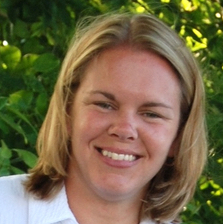
In the past several years, Cool Planet has rocketed from inception to the pilot stage to producing commercially available biochar, a product that could have a significant impact on California’s severe drought conditions. Farmers that use Cool Planet’s biochar can use up to 40 percent less water on the same crop surface area and maintain the same yield, or use the same amount of water and harvest a significantly bigger yield.
The enhanced biochar (the commercial name is CoolTerra) is created from biomass, which can include agricultural waste but the preferred source is wood chips, Cool Planet’s Commercial Director, Neil Wahlgren, explains. Living trees absorb carbon from the atmosphere, but when the tree dies, the carbon is released back into the air. Cool Planet’s biochar process uses locally sourced biomass (within 30-50 miles of each plant, reducing transportation) and captures the carbon, keeping it permanently in the soil so it is not released back into the atmosphere. This helps reduce the total amount of greenhouse gases.
Cool Planet has also figured out how to adjust the pH level of the end product, from a level of 8.5 to 9 (which is too alkaline) to 6.5 to 7, which increases water and nutrient retention. Even if raw biochar were put into the soil without adjustments, the soil would eventually reduce the pH on its own, but it would take 3 to 5 years, and the biochar would not be as effective during this time. Cool Planet has refined this process to take 12 minutes, so the resulting biochar is like “move-in ready condos for water and nutrients,” says Wahlgren.
After a stringent rinsing and quality control process, the biochar achieves the CoolTerra name. The enhanced biochar is certified organic and can be blended with compost for good results. Customers can apply it once to their soil and reap its benefits, but if it is applied every few years, the effects are cumulative.
“Biochar is applied on a case-by-case basis,” Wahlgren says. “It will stay intact in soil for years, if not decades.”
Customers can design their own application process depending on what they need. Some customers will use the enhanced biochar to enrich one parcel of land so that they use less water, some will use it to enrich more land than they were previously able to cultivate because they can distribute the water over a larger area. Some will enrich a parcel of land, use the same amount of water and increase their yield. The biochar also enables customers to use less fertilizer, which reduces the amount of fertilizer runoff into stormwater. Fertilizer in stormwater can make its way into the ocean, causing algae blooms. Wahlgren recounted field test results that showed a 61 percent increase in radish and lettuce yield and 56 percent increase in strawberry yield when grown with 40 percent less nitrogen fertilizer.
Along with good results in the ground fruits market, enhanced biochar also has a big impact on permanent crops like vineyards and the tree market (orchards).
“Every year, 3 to 5 percent of trees end up dying due to a poor soil patch. When they are replanted, biochar helps lock up excess salt or heavy metals and protects plants, increasing the health and growth of those plants,” Wahlgren says.
In addition to the agriculture market, biochar can also be used to reduce water use in landscaping. Thousand Oaks, a town in California, piloted CoolTerra in front of their city hall beginning in August 2014. A 6,000 square foot area of grass has flourished with 50 percent less water. It is a visible demonstration of what CoolTerra can do.
Cool Planet is backed by such companies as BP, Google Ventures, Energy Technology Ventures (GE, ConocoPhillips, NRG Energy), and the Constellation division of Exelon.
“We have strong backers that are reputable players that have vetted the product,” Wahlgren says. “That carries a lot of weight.”
In October 2014, Cool Planet opened a plant in California with a capacity of producing 60,000 cubic yards annually, and already, Wahlgren says, demand is overtaking supply. Cool Planet itself is growing as fast as the crops its biochar benefits. The CoolTerra team has grown from 2 people in 2012, to 16 people currently.
Cool Planet has customers in Canada, UAE and Florida, but most of its customers are in California, where its operations are based. This puts the company in the right place to combat drought conditions in a state in its fourth year of record temperatures and water scarcity.
Cool Planet is working on consumer awareness, and has even ventured into the retail market. California consumers can now buy a 10-quart box, so homeowners can reduce their water consumption and still have their gardens. Currently 20 stores are carrying the product and the company is looking to expand, with 30 to 50 lb. bags available by mid-spring 2015.
In a year, perhaps CoolTerra will be available in retail outlets across the country. For now, it will be interesting to see how much they can aid efforts to conserve water and improve crop yields through commercial and residential use in California.
image credit: Lou Gold, Flickr creative commons license.

Andrea Newell has more than ten years of experience designing, developing and writing ERP e-learning materials for large corporations in several industries. She was a consultant for PricewaterhouseCoopers and a contract consultant for companies like IBM, BP, Marathon Oil, Pfizer, and Steelcase, among others. She is a writer and former editor at TriplePundit and a social media blog fellow at The Story of Stuff Project. She has contributed to In Good Company (Vault's CSR blog), Evolved Employer, The Glass Hammer, EcoLocalizer and CSRwire. She is a volunteer at the West Michigan Environmental Action Council and lives in Grand Rapids, Michigan. You can reach her at andrea.g.newell@gmail.com and @anewell3p on Twitter.














